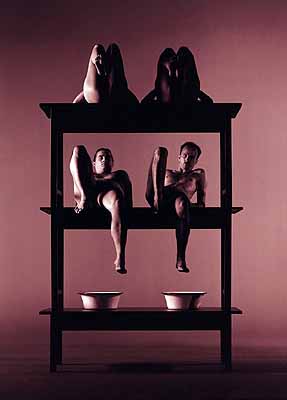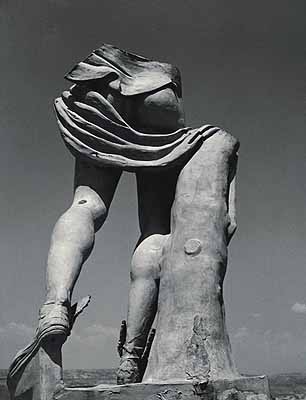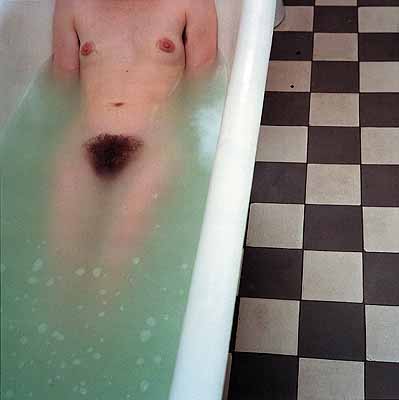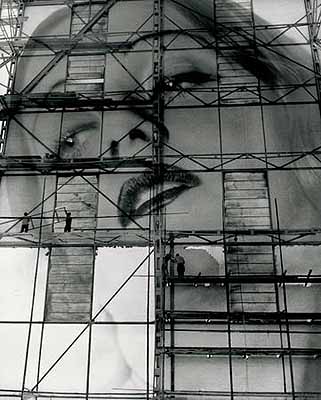
On the Body and Other Things / / Von Körpern und anderen Dingen
Dieter Appelt » Tina Bara » Bernd & Hilla Becher » Karl Blossfeldt » Anna & Bernhard Blume » Erwin Blumenfeld » Katharina Bosse » Rasso Bruckert » Max Ehlert » Dörte Eißfeldt » Anke Erlenhoff » Günther Förg » Thomas Florschuetz » Christoph Frick » Renate Guenther » F.C. Gundlach » Andreas Gursky » Candida Höfer » Heinz Hajek-Halke » Raoul Hausmann » Claudio Hils » Andreas Horlitz » Arno Jansen » Daniel Josefsohn » Peter Keetman » Delia Keller » Gudrun Kemsa » Edmund Kesting » Jürgen Klauke » Herlinde Koelbl » Herbert List » Melanie Manchot » Werner Mantz » Olaf Martens » Katharina Mayer » Lucia Moholy » László Moholy-Nagy » Floris Neusüss » Helmut Newton » Gabriele & Helmut Nothhelfer » Max Regenberg » Albert Renger-Patzsch » Leni Riefenstahl » Klaus Rinke » Franz Roh » Michael Ruetz » August Sander » Nina Schmitz » Katharina Sieverding » Anke Stalpers » Eric Strelow » Wolfgang Tillmans » Herbert Tobias » Alexandra Vogt » Yva (Elsa Neuländer-Simon) » Wolfgang Zurborn »
Exhibition: 18 Jun – 28 Sep 2003
City Gallery Prague - Metropolitan Library
Mickiewiczova 3
160 00 Praha

Curated by Klaus Honnef and Gabriele Honnef-Harling The organizer of the extensive exhibition project called "Of Bodies and Other Objects - German Photography in the 20th Century" is the City Gallery Prague in association with the German theoretician of photography Klaus Honnef. This is the first opportunity for the Czech public to see the work of leading German photographers, who went down in the history of the phenomenon that German photography incontestably is, in the course of the last century. The exhibition "Of Bodies and Other Objects - German Photography in the 20th Century" - shows on examples of selected photographs the transformation of the view of the human body. Just like a picture, the body is the object of most varied external influences. Social circumstances even modulate its external appearance. Although we like to attribute to photography veracity, it only forms images reflecting certain opinions and ideas of reality, and not reality as is. Four generations of distinguished artists, male and female photographers, show the body against a background of German history in harmony with modernist architecture, the world of things and the mass media. The way they saw the body and objects is as important as the reality they were looking at. To highlight this aspect, the exhibition presents almost exclusively pictures of 'staged photography' (Klaus Honnef), that is photography with artistic ambitions or fashionable and propagandist, not press, photography. These pictures reflect as in a focal point the social and cultural history of Germany -condensed and sometimes, in the words of Bertolt Brecht, 'distorted to visibility'. They capture the metamorphosis of the photographic view of the body from the classic antique ideal and its gradual disappearance, accompanied by the phenomenon of Time, physical death. Twice in the last century German photography played an important role in the history of the photographic medium. After the First World War and the collapse of bourgeois culture and the catastrophe of the unexpected defeat it lent a form to Man's wounded self-consciousness and hidden conflicts of a deeply damaged society since the second half of the 20th century to the present day. The exhibition begins in the historical part with some distinguished and famous photographers. They are August Sander, Albert Renger-Patzsch, Laszlo Moholy-Nagy, originating from Hungary, Karl Bloßfeldt and Heinz Hajek-Halke. The work of the latter is a bridge, as it were, over the period of National Socialism in Germany. Together with Peter Keetman he represents the school of 'subjective photography.' The most important photographer developing this tradition to the present day and connecting it with surrealism is Arno Jansen. The most important aesthetic initiatives of 'New Objectivity' and 'New Seeing' are used as a starting point for the work by Hilla and Bernd Becher and Floris M. Neusüss. Pupils of the Bechers, such as Andreas Gursky and Candida Höfer, represent the best-known offshoot of contemporary photography in Germany. Neusüss and Jansen also have many followers. Some major initiatives came in the 1970s from progressive artists. Jürgen Klauke, the couple Bernhard Johannes and Anna Blume, Klaus Rinke, and Katharina Sieverding, expanded considerably the aesthetic conception of photography. In closer or looser association with avant-garde art they made such art photographers as F.C. Gundlach, Michael Ruetz, Thomas Florschuetz, Wolfgang Tillmans, Andreas Horlitz and in particular, Gabriele and Helmut Nothhelfer, forming an independent photographic pictorial conception. This incomplete list of male and female photographers indicates that the exhibitions captures the spectrum of German photography in the polarity of themes 'the body and architecture.' In pithy shots it shows the multifaceted relations between Man and his environment during the last hundred years and in this context it represents architecture as an element of ambivalent nature. On the one hand, some pictures capturing modern architecture show buildings as almost autonomous objects, which may even appear unfriendly to Man. On the other hand, architecture is presented as a protective function, as a continuation of human complexion, clothing, a shell of Man, as it were. The photographs in the style of New Objectivity also manifest the gaining of independence of the world of things, both natural and artisanal and industrially produced; these circumstances signify new impulses and human carnality. Another focal point of the exhibition is contemporary photography. It presents the full gamut of photographic possibilities, from a view primarily influenced by painting (Anke Erlenhoff) with physical (artisanal) work on the one hand, to New Artificiality (Neue Künstlichkeit), using digital technologies (Gerhard Mantz, Renate Guenther), from staging of bodies (Olaf Martens) to a Terse Randomness (Lapidare Beiläufigkeit) in relation to their depiction (Daniel Josefsohn). For many photographers (Nina Schmitz and Delia Keller) the model is the cinema. A general sub-theme of the exhibition is Time. The timely nature of bodies is the subject of tableaux by Dieter Appelt, like the 'Timescapes' by Michael Ruetz, and it is also seen in many other contributions. Perception of the body subjected to time is in sharp contrast with the heroic expression, as though out of time, in the works of the photographers of the 1930s, such as Herbert List, Leni Riefenstahl and Max Ehlert. While List and Riefenstahl pay homage to the individual body of classic origin, Ehlert celebrates the human body as an element of a protective column. An ornament on the mass that a little later would steamroller across the countries neighbouring Germany. Photography opened women the way to the world of art. It is therefore no accident that the exhibition 'Of Bodies and Other Objects' presents almost as many women photographers as men. The contribution to contemporary photography made by women is greater than that from men.

